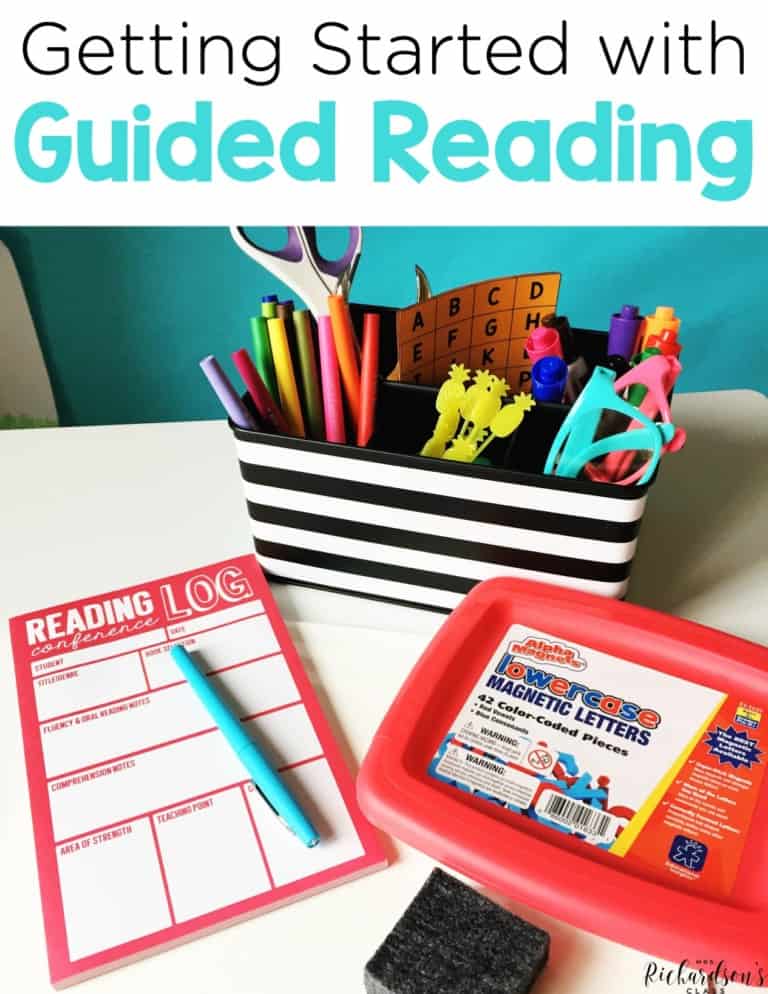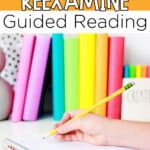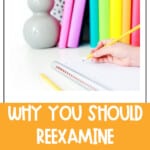


Change. It can be tough. If you have spent a few years in a classroom, you know that change is inevitable. Year after year things change. We adopt new ways. We learn new things about teaching practices, new research like the science of reading, the way students learn, and we reexamine the way we have always done things.
After a lot of reading, listening, and reflecting, I’m reexamining my guided reading practice and routine as I have always done it. And I’d like to encourage you to do the same.
Research, both old and new, says that explicit and systematic phonics teaching is crucial. If you come from a strong balanced literacy background like me, you know that phonics is a part of your literacy routine. What I have learned over the last few years is that the term “balanced literacy” means different things in different schools. For me, phonics was a part, but not the most important part. It also was not a part that my small group instruction was structured around.
My small group time was structured around a student’s reading level and where I needed to support them on their journey. The focus was on language comprehension, which is an important part of reading, but it is not all. I thought this was good. I thought this was right. But friends, my eyes have been opened with the science of reading research.
Am I saying reading levels are bad? No, not at all. I think they are a helpful tool for teachers.
They aren’t THE KEY, though. We don’t live and breathe by reading levels. Unfortunately, because we have done this for years, we have also taught parents to. This tool has become a source of stress for some parents. Reading levels became something they were never meant to be.
So, what should we be doing instead? What should our reading small group practice be structured around?
When we look at Scarborough’s reading rope, first we see how many factors there truly are when it comes to learning to read.
Then we see that it takes both language comprehension AND word recognition to develop a skilled reader. As a student’s decoding skills become more automatic and they become more strategic in using their growing language comprehension skills, these skills intertwine. The result: students develop into skilled, fluent readers. We must focus on BOTH areas. As a teacher with a strong balanced literacy background, as I reflected I found myself focusing more on comprehension as my biggest fear was producing word callers—readers who could not understand what they were reading.
But now I know better and so I am changing my ways. I encourage you to reexamine your guided reading practice also if you have found yourself in the same place as me.
If you are looking for resources to help make your small groups a breeze, you’ll love my decodable kits and my newly updated leveled kits.
First, I have Decodable Readers Kits that have everything you need to use decodable readers to help students with phonics skills and decoding skills. There are four different types of kits:
Each kit has everything you need to successfully teach including decodable books and passages, detailed lesson plans, phonics practice materials, teaching posters, and more. You can get each set individually or grab the bundle to save.

Next, I have leveled guided reading kits for Kindergarten (Levels A-D), First Grade (Levels E-J), and Second Grade (Levels K-M). These kits also have everything you’ll need for guided reading lessons. I included books (printable and digital), scripted lessons, word work activities, teaching posters, parent involvement notes, and more. They have been recently updated to better reflect the best science of reading practices.
No matter where you are in your teaching journey, in your literacy journey, or in your small group journey, it’s never too late to make a change. We are educators. To sum it up, we are professionals at making changes that are BEST for kids. I welcome you on this journey that I have been on for the last two years.
Are you looking to learn more about bringing the science of reading research to your reading small groups? Join me in this FREE workshop!

Want to use the latest research to boost your readers during small groups? This FREE guide is packed with engaging ideas to help them grow!

I’m a K-1 teacher who is passionate about making lessons your students love and that are easy to implement for teachers. Helping teachers like you navigate their way through their literacy block brings me great joy. I am a lifelong learner who loves staying on top of current literacy learning and practices. Here, you’ll find the tools you need to move your K-2 students forward!


| Cookie | Duration | Description |
|---|---|---|
| cookielawinfo-checkbox-analytics | 11 months | This cookie is set by GDPR Cookie Consent plugin. The cookie is used to store the user consent for the cookies in the category "Analytics". |
| cookielawinfo-checkbox-functional | 11 months | The cookie is set by GDPR cookie consent to record the user consent for the cookies in the category "Functional". |
| cookielawinfo-checkbox-necessary | 11 months | This cookie is set by GDPR Cookie Consent plugin. The cookies is used to store the user consent for the cookies in the category "Necessary". |
| cookielawinfo-checkbox-others | 11 months | This cookie is set by GDPR Cookie Consent plugin. The cookie is used to store the user consent for the cookies in the category "Other. |
| cookielawinfo-checkbox-performance | 11 months | This cookie is set by GDPR Cookie Consent plugin. The cookie is used to store the user consent for the cookies in the category "Performance". |
| viewed_cookie_policy | 11 months | The cookie is set by the GDPR Cookie Consent plugin and is used to store whether or not user has consented to the use of cookies. It does not store any personal data. |



4 Responses
Hi Amanda,
I’ve really been trying to learn more about the Science of Reading philosophy. I think it’s great. I joined your guided reading group and have watched all your videos. I’m wondering if you have made any changes with your materials in regards to the Science of Reading or others that I should be viewing? Thanks so much!
Deanne
Hi Deanne!! I updated the workshop last May so if you haven’t been in there since then, be sure to log back in! Several lessons were re-recorded entirely! There are some updates coming in June of this year, though! 🙂 Let me know if you have any other questions!
Hello…….I have been following your posts and blog for some time now. I love to teach students how to read and to love books. I have a question. I have been rethinking guided reading. I would like my teachers to start with decodables for guided phonics groups . I still want them to used leveled readers for students who are reading fluently to match the science of reading. When doing guided phonics, is there a guide to help the teacher know the student is ready for leveled readers? Thank you!
Hi Patricia! I truly think it depends on the student’s ability to decode words. I think around level G most students may be ready for leveled readers over decodables, but just keep in mind that students still need to be sounding out words with the strategies they have learned (be it phonics patterns, finding the syllable types, or just sticking with it as they are sounding out the words and having the confidence to not give up) and not depending on the pictures. If they are, jump them back to decodables where there is less picture support and words follow phonics patterns that the student needs support with. It is also important for the students in leveled readers to continue to receive explicitly, systematic phonics lessons. 🙂 Let me know if you have any other questions!!